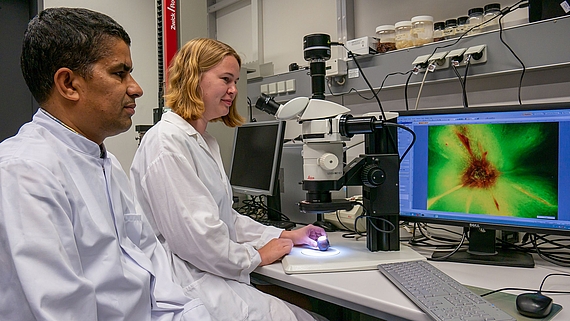
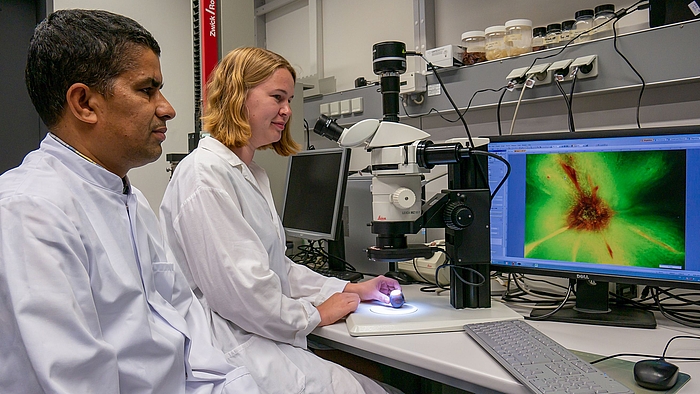
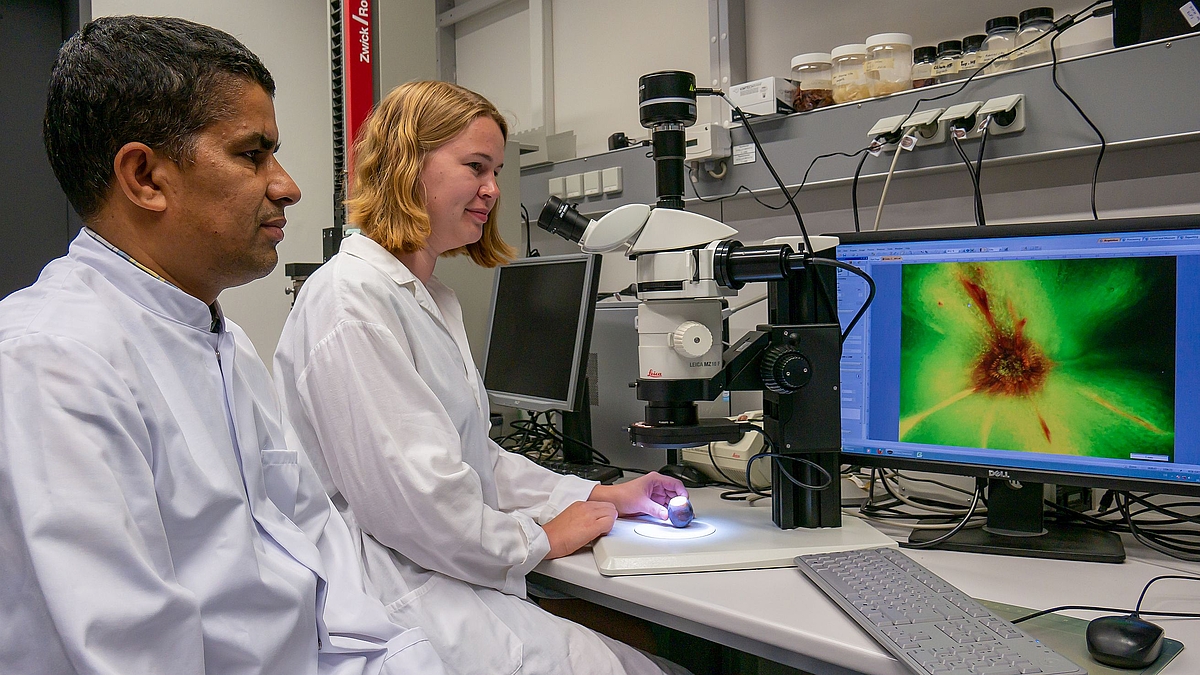
Our research focuses on: (1) the growth and development of fruits, (2) the formation and properties of primary and secondary dermal tissues of fruits and (3) the water relations and mechanical architecture of fruits. We are particularly interested in fruit skins. The condition of the skin commonly determines a fruit’s external quality and thus its value. Examples of skin defects are: open cracks, uncontrolled water loss and uptake, shrivel and infection by fruit rot pathogens. Such understandings of developmental changes in fruit structure and functionality are indispensable for proper handling of fruit at harvest and later during its subsequent transport/storage.
Russeting
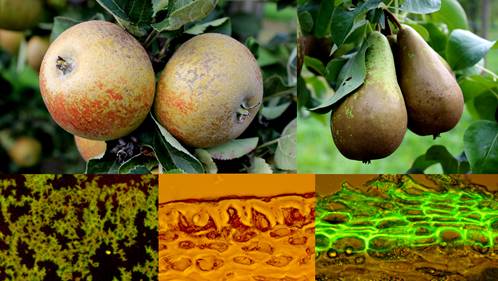


During the growth of many plant organs, the primary skin (epidermis) is often gradually replaced by a rough, brown secondary skin (periderm). Where this occurs on a fruit it is referred to as ‘russeting’. Russeting occurs in many fruit crops worldwide. While a russeted skin is a characteristic of some fruit species and cultivars (e.g. Beurré Bosc pears, Cantaloupe melons) for most fruits it is viewed by the consumer as unattractive, so the fruit’s value is compromised. The first symptom of russeting is the formation of microscopic cracks in the cuticle. These ‘microcracks’ trigger the formation of a wound periderm and thus russeting. Our research focuses on russeting in apples and pears. Here we investigate the physical properties of the fruit skin, its physiological performance and the molecular regulation of russet development.
Skin cracking
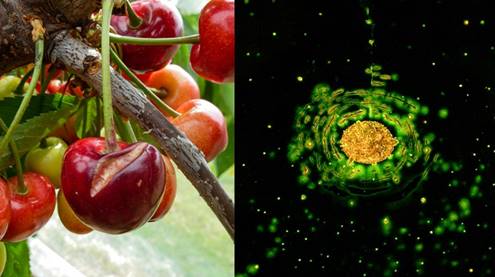


The skins of many soft fruits crack when exposed to free water (rain, dew), especially when close to maturity. Prominent, high-value examples include: grapes, cherries, plums, tomatoes, currants and blueberries. Using sweet cherry as a model, we are exploring the underlying causal relationships. The common assumption has been proved wrong, namely that skin cracking is caused by a too-high internal pressure, like in a toy balloon. Our results demonstrate that skin cracking instead results from local defects that impair the barrier functions of the cuticle. Water uptake causes individual epidermal cells to burst. This initiates a chain reaction that ‘unzips’ the skin in much the same way as a ‘ladder’ will ‘run’ in a knitted fabric. Spray applications of calcium salts are a promising tool that improves cell-to-cell adhesion and helps limit crack propagation.
Physiological fruit disorders
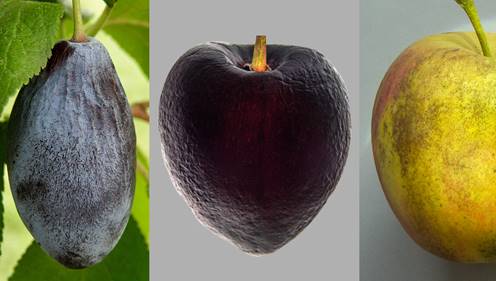


The fruit industry is frequently beset by new physiological disorders of unknown origin and cause. These disorders have significant economic consequences, as fruit quality can be very severely compromised. Well-known examples include skin-spots in apple, vascular browning and the formation of cavities in apple, orange-peel disorder in cherry, rain damage in strawberry, cracking and pedicel shrivel in cherry and neck shrivel in plum. The aim of our research is to elucidate the causes of such phenomena. This knowledge is essential if effective countermeasures are to be developed for use by breeders and producers.
Management


30419 Hannover




